Complete Guide to Washita Battlefield National Historic Site in Oklahoma, including things to do, history, hours, directions, lodging, hiking, and so much more.
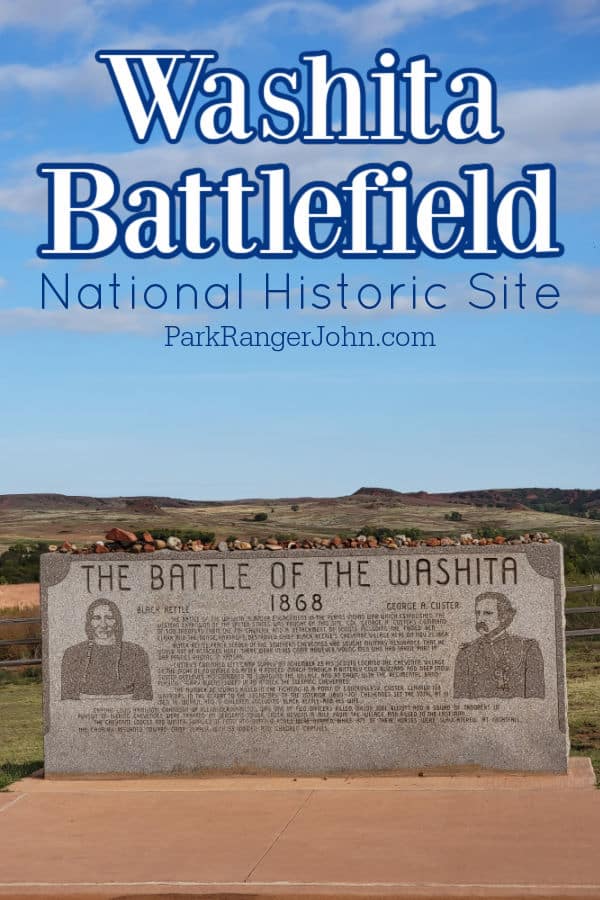
Washita Battlefield National Historic Site
Washita Battlefield National Historic Site is located in western Oklahoma. The 315-acre park protects the location of a Plains Indian Tribe that was attacked.
The conflict between Plains Indians tribes and settlers moving west reached a tipping point in 1868. Attempts to force tribes to reservations led to intertribal battles and rebellion among young warriors even with many chiefs wanting peace.
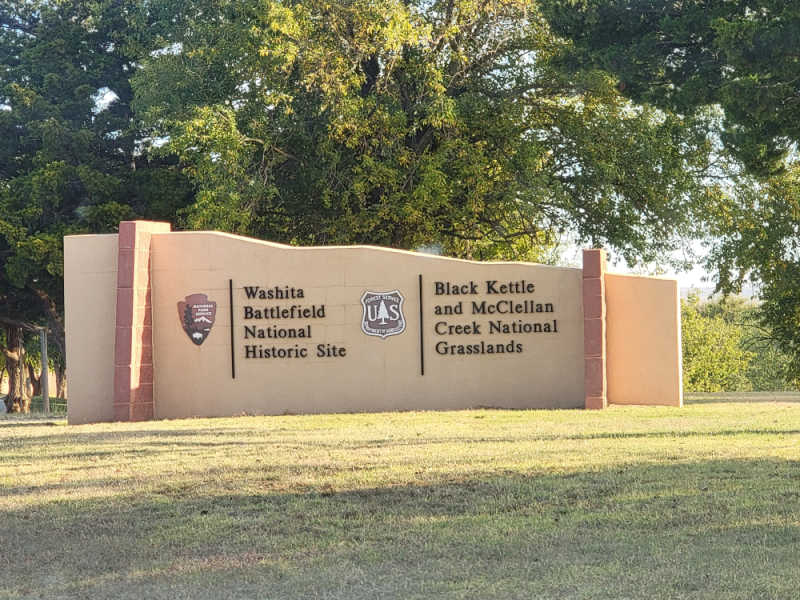
About Washita Battlefield National Historic Site
On November 27, 1868, Lieutenant Colonel George Armstrong Custer led the 7th U.S. Cavalry a surprise dawn attack on a Southern Cheyenne village of Peace Chief Black Kettle on the Washita River.
The exact details of the attack and what happened are still being debated. Peace Chief Black Kettle and a number of Cheyenne women and children were killed during the attack in the Washita River Valley.
According to the NPS this is how the battle is described:
The attack on the morning of November 27, 1868, came unexpectedly. Lt Colonel George Armstrong Custer led the 7th Cavalry led the attack with four battalions. Custer attacked straight into the village while other battalions attacked from the northeast and southwest.
The Cheyenne were driven from their lodges barefoot and half-clothed and pursued by the soldiers. Many warriors fought and died during the Battle of Washita.
The village leader Black Kettle and his wife Medicine Woman Later were killed by soldiers while trying to cross the Washita River.
Two hours after lt col George Custer attacked approximately 30 to 60 Cheyenne had passed away in the snow and mud. After the attack, Custer ordered the killing of over 800 animals including village pony and mule herds, and also burned the Cheyenne lodges with all of their winter supply of food and clothing.
This winter campaign attack forced many tribal members to accept reservation life. If they were not safe in cold weather from attack when would they be safe?
You may recognize Black Kettle from also being a part of the Sand Creek Massacre in November 1864. Prior to this attack in 1864 Black Kettle had been pursuing a policy of peace and believed his village was under the US Army protection.
The Treaty of Little Arkansas was signed on October 17, 1865, and the Treaty of Medicine Lodge in October 1867. These treaties said the Cheyenne, Arapaho, and other tribes agreed to stop raiding and settle on reservations in Indian Territory which is now Oklahoma.
There is an interpretive panel in the visitor center that explains how Lt. Col. George A. Custer met with Stone Forehead who was the keeper of the Cheyenne's sacred arrows in March of 1869. During the meeting, Custer, Stone Forehead, and the other elders in attendance smoked the sacred pipe of peace.
When they finished smoking the sacred pipe of peace the chief dumped the tobacco ashes on Custer's boots and told him that if he ever attacked or lied to the Cheyenne again, he would die.
The Cheyenne would meet Lt. Colonel Custer one more time in 1876 at the Battle of Little Bighorn. The prophecy came true during the Battle of Little Bighorn in 1876. Lakota and Cheyenne warriors overwhelmed and destroyed Custer's detachment of the 7th US Cavalry. Custer was killed during this battle.
Washita Battlefield NHS is one of the least visited National Park Sites with less than 25,000 visitors a year.
Is Washita Battlefield National Historic Site worth visiting?
A visit to Washita Battlefield National Historic Site is well worth the time for anyone interested in American history and the American Indian Wars.
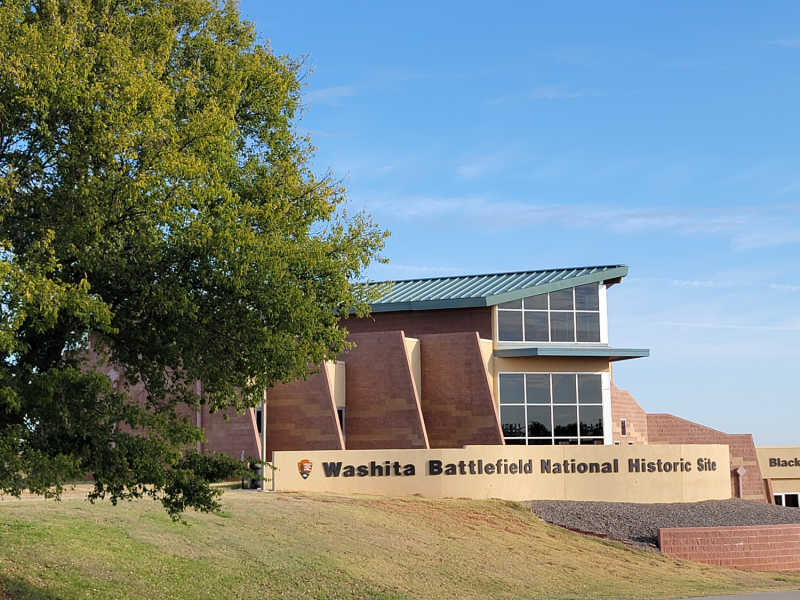
History of Washita Battlefield National Historic Site
The Washita Battlefield National Historic Site protects the site of the Battle of Washita River, fought during the Great Plains Wars (1854 to 1879). The battle, which occurred on November 27th, 1868, was a surprise attack on the winter camp of the Southern Cheyenne.
In the 1850s and especially the 1860s, white settlers heading west across the Great Plains disrupted the lives of the Native Nations tribes who lived and hunted in the region. Competition for resources and land led to war on the Great Plains between the Americans and the Native Nations tribes.
The Battle of Washita was part of a campaign by General Phillip Sheridan of the U.S Army to put an end to hostilities on the Great Plains. Sheridan sent Colonel Custer to the Washita River where 8,000 Cheyenne and Arapaho people had settled in for the winter.
What Led to The Battle of Washita?
As Americans pushed further west in search of gold and more land to farm, Congress looked for an answer to freeing up coveted land. They hoped to limit conflict in the process. Congress developed the reservation policy, which moved the Native Nations from their land into smaller areas in Oklahoma, known as Indian Territory.
To encourage the Native Nations to leave their ancestral homelands, the U.S government agreed to provide supplies and resources to those who decided to move. Congress promised Native tribes that their new territory in Oklahoma would not be taken by settlers. Nevertheless, many Great Plains tribes refused to move into the designated area.
Tensions between the Native Nations tribes of the Great Plains and the settlers steadily increased. Violence became widespread in the 1860s.
Many of the Plains tribes, especially the younger generation, chose to fight for their land. The Plains tribes retaliated by raiding settlements, attacking U.S Military forts, travelers, and stagecoaches, making their way across the Plains.
In 1864, the massacre of a Cheyenne village along the Sand Creek River triggered more violence. Despite several attempts at peace through treaties and the promise of reparations to the Cheyenne tribe, nothing changed. Violence continued to escalate, and there seemed to be no hope of a swift, peaceful resolution.
General Sheridan became increasingly frustrated with the situation. Sheridan devised a plan to strike the Plains tribes during winter when they were at their most vulnerable.
Roughly 8,000 Cheyenne, Comanche, and Arapaho had made camp along the Washita River. Colonel Custer came across the camp of the Southern Cheyenne and planned to attack.
The Battle of Washita
In the dead of night on November 27th, Colonel Custer and his army of over 600 men marched from their base in Indian Territory. They surrounded the unsuspecting Cheyenne village camped at the bend along the Washita River.
The leader of the village Custer had surrounded was Peace Chief Black Kettle, who had survived the Sand Creek Massacre. Black Kettle was working hard to avoid another tragedy.
On the morning of the 27th, the Cheyenne village was awakened by a single shot, the sound of Gary Owen's opening notes, and the call to charge. The soldiers had split into four columns, the largest charged directly toward the village, while one column attacked from the northeast and another from the southwest.
The warriors in the villagers scrambled to defend the village, some half-dressed grabbing any weapon they could. Some warriors took up a position behind trees and tried to fight Custer’s men.
Chief Black Kettle and his wife, Medicine Woman, were shot trying to flee across the Washita River.
Over 80 Cheyenne villagers were killed during the attack, many were women and children. Sheridan had ordered Custer to cripple the Plains tribe's capability to wage war.
Custer rounded up the 875 horses and mules that belonged to the village, separated 225 of them, and slaughtered the rest. Thereafter, Custer ordered the camp to be set alight. The fire destroyed everything.
During the attack Custer took 53 women and children captive, which he took back to Camp Supply in Oklahoma.
The Aftermath of the Battle of Washita
The Battle of Washita was considered a success. The destruction of the Cheyenne camp included the villager's food, clothing, and blankets. The destruction of supplies, combined with the knowledge that not even winter had halted hostilities, led many tribes to move to the reservations.
The Battle of Washita secured Custer's reputation as the “top Indian fighter.” Today the site of the battle of Washita is preserved by the National Parks Service. The site memorializes all those who died during the attack.
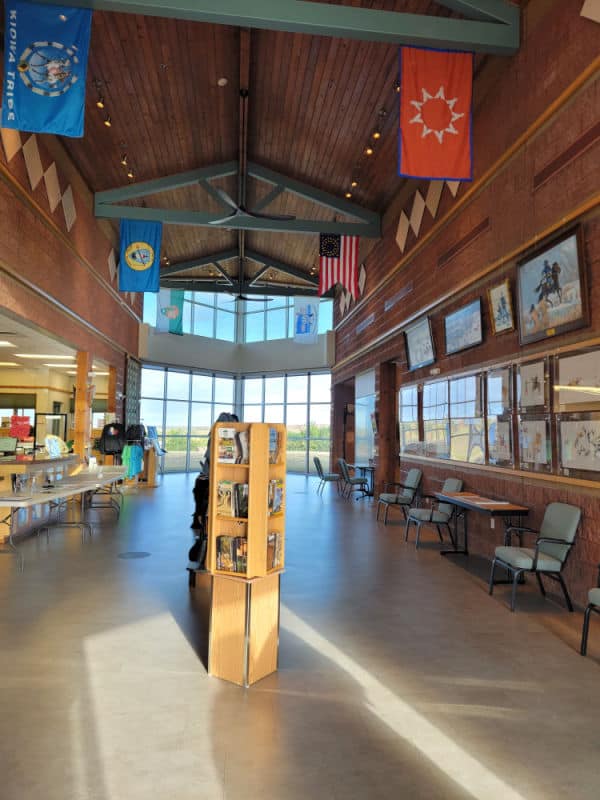
Things to know before your visit to Washita Battlefield National Historic Site
Entrance fee
$0.00, there is no fee to visit this National Park Site
Learn more about National Park Passes for parks that have an entrance fee.
$80.00 - For the America the Beautiful/National Park Pass. The pass covers entrance fees to all US National Park Sites and over 2,000 Federal Recreation Fee Sites for an entire year and covers everyone in the car for per-vehicle sites and up to 4 adults for per-person sites.

Buy your pass at this link, and REI will donate 10% of pass proceeds to the National Forest Foundation, National Park Foundation, and the U.S. Endowment for Forestry & Communities.
National Park Free Entrance Days -Mark your calendars with the five free entrance days the National Park Service offers annually.
Time Zone
Central Time Zone
Pets
Pets are not allowed on the park battlefield trail or in buildings (service animals excepted).
Cell Service
Cellular service is available in most nearby communities. However, areas without coverage may exist within the park.
Park Hours
The park is open from Sunrise to Sunset.
The visitor center is open from 8:00 a.m. - 4:30 p.m. Closed on Thanksgiving, Christmas, and New Years Day.
Wi-Fi
Wi-Fi is not available in the park.
Insect Repellent
Insect repellent is always a great idea when outdoors, especially if you are around any body of water.
We use Permethrin Spray on our clothes before our park trips.
Water Bottle
Make sure to bring your own water bottle and plenty of water with you. Plastic water bottles are not sold in the park.
Parking
There is a large parking lot at the visitor center and an additional parking area near the overlook.
Food/Restaurants
There are no restaurants within the park.
Gas
There are no gas stations within the park.
Drones
Drones are not permitted within National Park Sites.
National Park Passport Stamps
National Park Passport stamps can be found in the visitor center.
Washita Battlefield NHS is part of the 2010 Passport Stamp Set.
We like to use these circle stickers for park stamps so we don't have to bring our passport book with us on every trip.
The National Park Passport Book program is a great way to document all of the parks you have visitied.
You can get Passport Stickers and Annual Stamp Sets to help enhance your Passport Book.
Electric Vehicle Charging
There are 2 electric vehicle charging stations within a 30 mile radius of Cheyenne, OK.
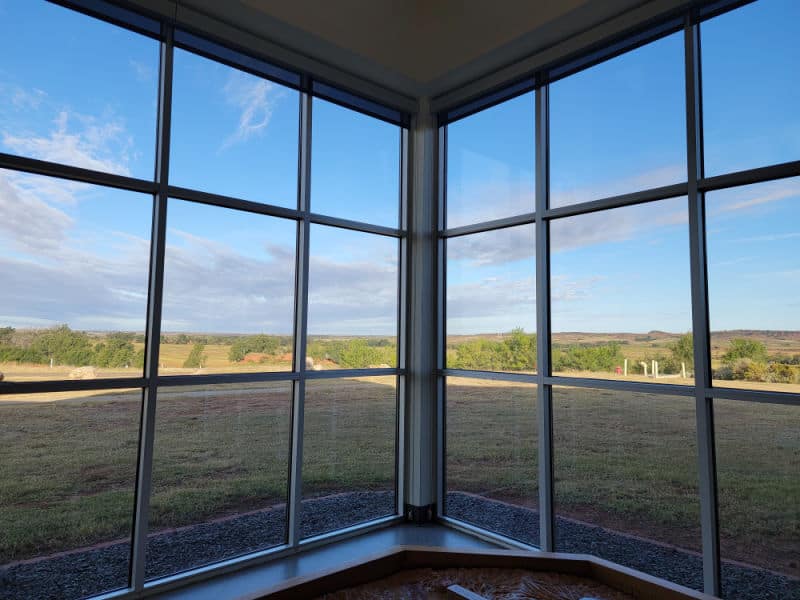
Details about Washita Battlefield National Historic Site
Size - 326 acres
Check out how the park compares to other National Parks by Size.
Date Established
November 12, 1996
Visitation
In 2021, Washita Battlefield NHS had 15,237 park visitors.
In 2020, Washita Battlefield NHS had 12,520 park visitors.
In 2019, Washita Battlefield NHS had 9,119 park visitors.
Learn more about the most visited and least visited National Parks in the US
National Park Address
18555 Hwy 47A, Ste. A
Cheyenne, OK 73628
United States
Washita Battlefield National Park Map
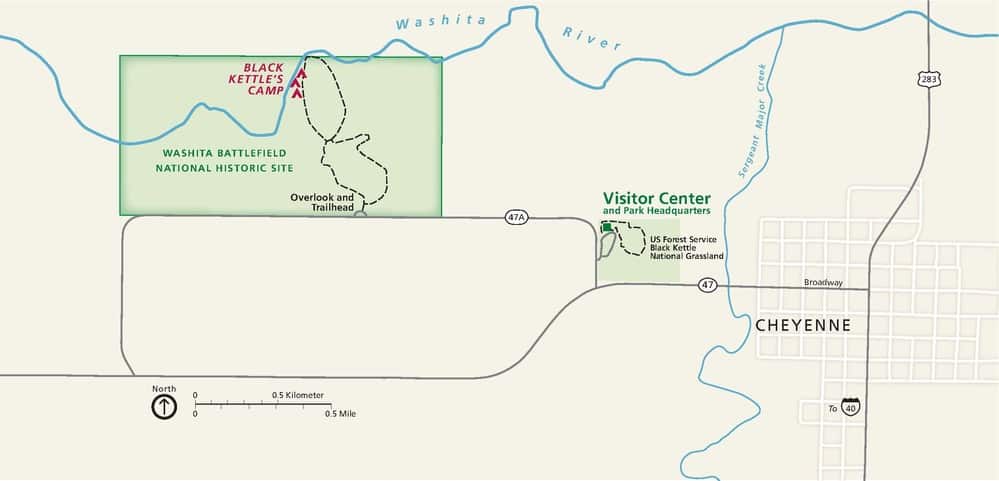
Where is Washita Battlefield National Historic Site?
Washita Battlefield is located just west of Cheyenne in western Oklahoma, approximately 130 miles west of Oklahoma City and 140 miles east of Amarillo, Texas.
Estimated distance from major cities nearby
- Oklahoma City, OK - 145 miles
- Lubbock, TX - 256 miles
- Wichita, KS - 251 miles
- Tulsa, OK - 250 miles
- Dallas, TX - 307 miles
- Fort Worth, TX - 281 miles
- Plano, TX - 304 miles
- Arlington, TX - 294 miles
- Garland, TX - 313 miles
- Austin, TX - 469 miles
- Colorado Springs, CO - 453 miles
Estimated Distance from nearby National Park
Great Sand Dunes National Park - 454 miles
Big Bend National Park - 566 miles
Gateway Arch National Park - 642 miles
Hot Springs National Park - 449 miles
Rocky Mountain National Park - 575 miles
Black Canyon of the Gunnison National Park - 614 miles
Where is the National Park Visitor Center?
The visitor center is easy to find and has a great self-guided museum. The visitor center shares a building with the Black Kettle National Grasslands USDA Forest Service office.
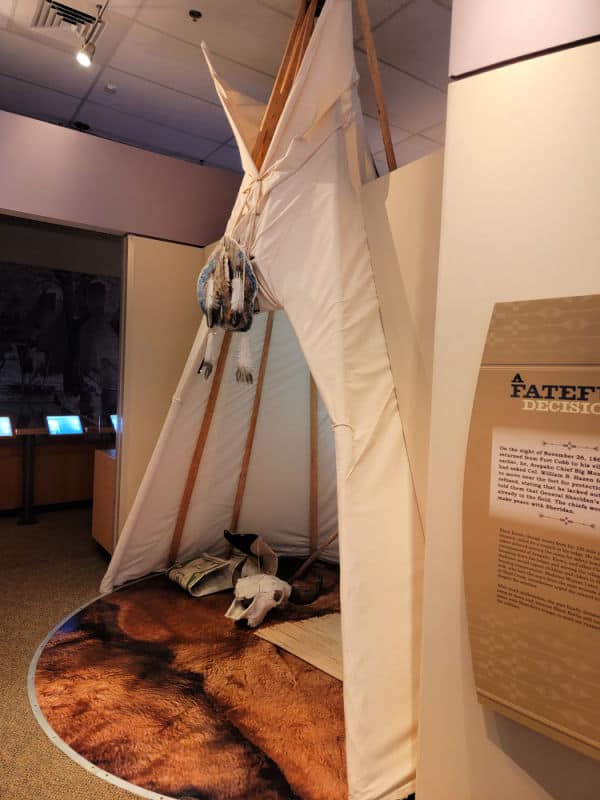
Getting to Washita Battlefield National Historic Site
Closest Airports
- Hobart Regional Airport (HBR)
- Will Rogers International Airport (OKC)
International Airports
- Rick Husband Amarillo International Airport (AMA)
Regional Airports
- Lawton-Fort Sill Regional Airport (LAW)
- Liberal Mid-America Regional Airport (LBL)
- Dodge City Regional Airport (DDC)
Driving Directions
From I-40 take exit 20 (Sayre) and travel north on US-283 to Cheyenne. In Cheyenne take US-283 north until it intersects with Hwy 47.
At the US-283 and Hwy 47 intersection travel west through scenic downtown Cheyenne. Once out of town continue west half a mile and turn north on Hwy 47A.
Continuing on Hwy 47A will take you to the new visitor center. By taking 47A a little farther you will find the historic site, featuring the park overlook and interpretive walking trail.
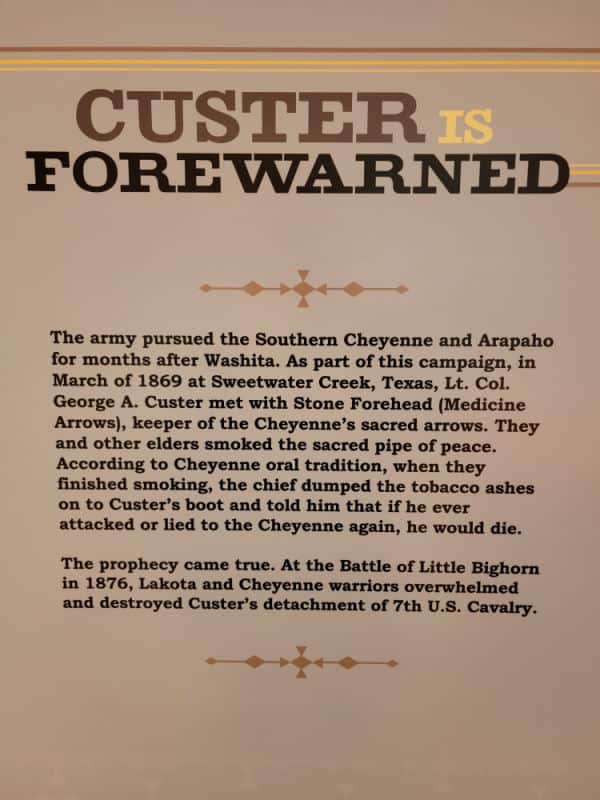
Best time to visit Washita Battlefield National Historic Site
Washita Battlefield National Historic Site is a place where visitors can learn about the history of the Southern Plains and the impact of the Indian Wars on the region, as well as the lives and culture of the Cheyenne people. The site is open to the public year-round, so anytime is a good time to visit and explore its history and beauty.
Weather and Seasons
The warmest weather starts from June 2nd to September 14th, when the average daily high temperature exceeds 86 degrees.
The coldest weather starts from November 23rd to February 24th, when the average daily high temperature is below 58 degrees.
The snowiest weather usually occurs between November 26th to February 27th, with an average of at least 1 inch a month. It snows most in January, with an average of 1.9 inches.
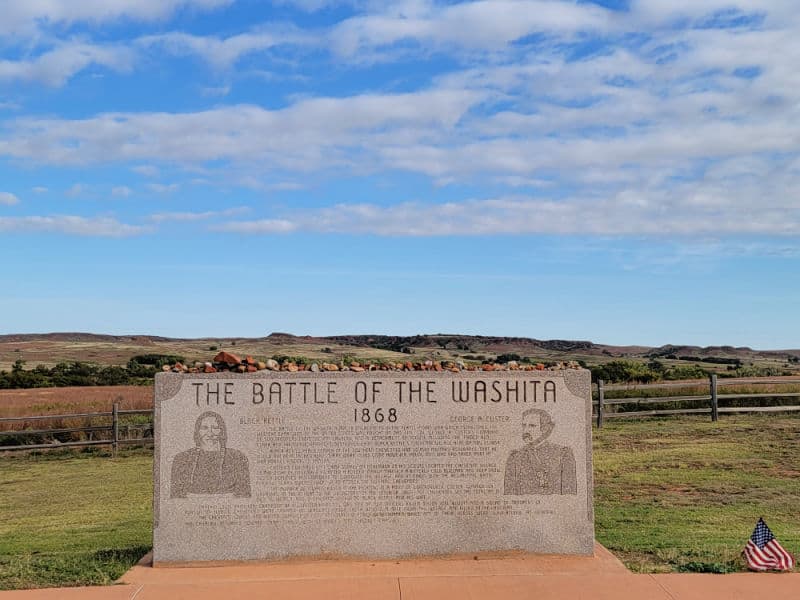
Best Things to do in Washita Battlefield National Historic Site
We suggest planning a minimum of a couple of hours to explore the park and visitor center.
Visitor Center
The visitor center is the perfect place to start your visit. There is an amazing array of interpretive displays that explain what happened at Washita Battlefield and the tragic clash of cultures that occurred.
The interpretive panels tell the story from both the Native American voice and the US Army Voice.
Destiny at Dawn - Park Movie
27-minute film focuses on the engagement and the events that led to it.
Junior Ranger Program
You can download the Junior Ranger program for Washita Battlefield ahead of time if you wish.
The Junior Ranger Program can be filled out while in the visitor center. You can also pick up the Oklahoma State Junior Ranger Program that can be filled out at each of the three Oklahoma National Park Sites.
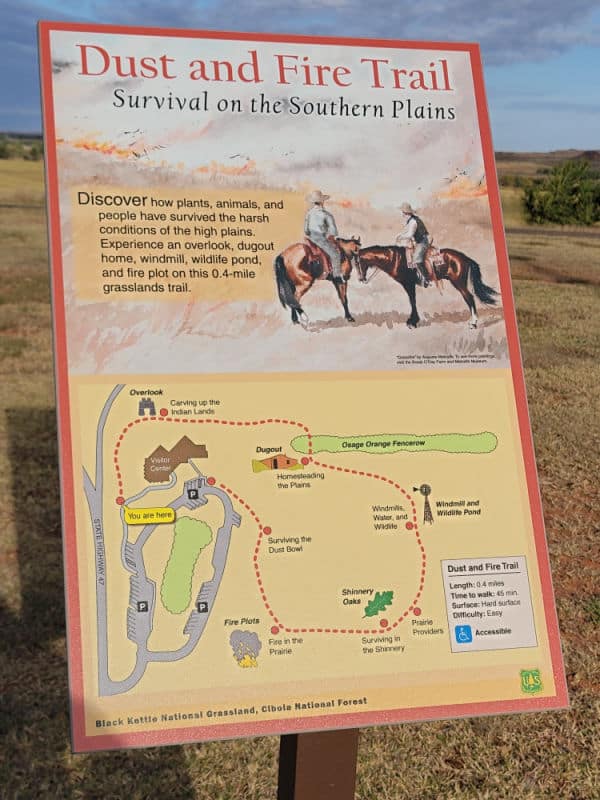
Hiking in Washita Battlefield National Historic Site
Always carry the 10 essentials for outdoor survival when exploring.
Washita Battlefield Park Trail
The 1.5-mile trail is self-guided includes 15 numbered stops along the way. You can pick up a trail brochure at the visitor center.
The trail is located just down the road from the visitor center. There is a great parking lot and beautiful views over the park.
The trail travels through the battlefield area and the location of Lt. Colonel George Armstrong Custer's attack on Chief Black Kettle's village.
The Dust and Fire Trail
This half-mile trail from the visitor center examines life on the great plains after the land run.
How to beat the crowds
We did not experience any crowds while visiting the park.
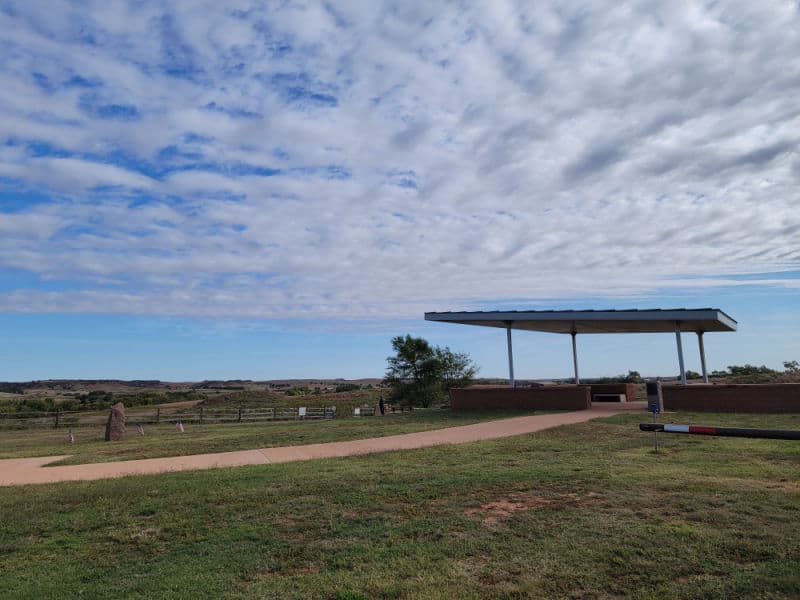
Where to stay when visiting/lodging
There are no National Park Lodges within the park.
Nearby Lodging includes:
OYO Hotel Elk City OK Route 66 - The hotel offers free in-room Wi-Fi, free parking, air conditioning, and more.
Hampton Inn & Suites Elk City - free breakfast buffet, a hair salon, and dry cleaning/laundry services at Hampton Inn & Suites Elk City. In addition to a 24-hour gym and a business center, guests can connect to free in-room Wi-Fi.
La Quinta Inn & Suites by Wyndham Elk City - Free full breakfast, a grocery/convenience store, and laundry facilities are just a few of the amenities provided at La Quinta Inn & Suites by Wyndham Elk City. Stay connected with free in-room Wi-Fi, and guests can find other amenities such as a bar and a gym.
Holiday Inn Express Hotel & Suites Elk City - free continental breakfast, laundry facilities, and a gym at Holiday Inn Express Hotel & Suites Elk City, an IHG Hotel. Free in-room WiFi and a business center are available to all guests.
Click on the map below for additional vacation rentals and lodging near the park.
Camping
There are no National Park campgrounds in the park.

For a fun adventure check out Escape Campervans. These campervans have built in beds, kitchen area with refrigerators, and more. You can have them fully set up with kitchen supplies, bedding, and other fun extras. They are painted with epic designs you can't miss!
Escape Campervans has offices in Vancouver, Seattle, Portland, San Francisco, Las Vegas, Los Angeles, Phoenix, Salt Lake City, Denver, New York, and Orlando
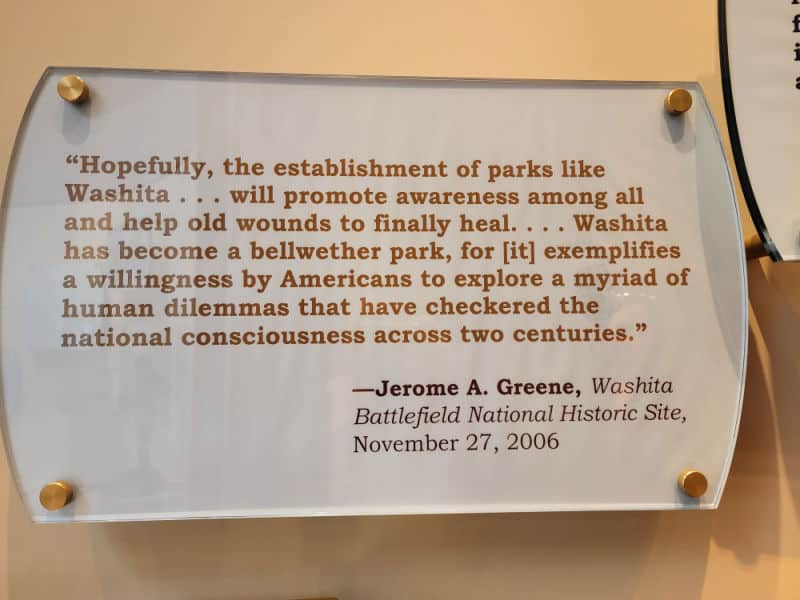
Parks Near Washita Battlefield National Historic Site
Oklahoma City National Memorial
Alibates Flint Quarries National Monument
Chickasaw National Recreation Area
Fort Smith National Historic Site
President William Jefferson Clinton Birthplace Home National Historic Site
Waco Mammoth National Monument
Check out all of the Oklahoma National Parks and neighboring National Parks in Texas, National Parks in New Mexico, National Parks in Colorado, National Parks in Kansas, National Parks in Missouri, and National Parks in Arkansas
Check out this full printable list of US National Parks in Alphabetical Order.
Check out all of the US National Historic Sites managed by the NPS
Make sure to follow Park Ranger John on Facebook, Instagram, Pinterest, and TikTok





Leave a Reply